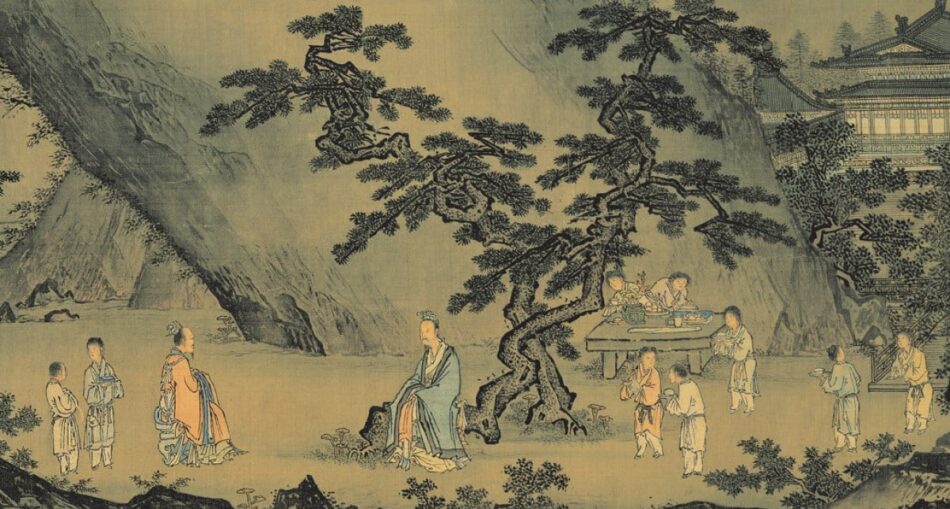The art in ancient China reflects more than just aesthetics—it embodies philosophy, politics, spirituality, and the evolution of one of the world’s oldest civilizations. At China Art Hub, we celebrate this rich heritage by offering insights and tools that connect modern enthusiasts to centuries of cultural expression.
Historical Context: Where Ancient Chinese Art Began
Ancient Chinese art dates back to Neolithic times (c. 5000–2000 BCE), when pottery and jade carvings first emerged. Over millennia, Chinese art evolved alongside dynasties, philosophies, and social changes.
| Dynasty | Art Highlights | Mediums Used |
|---|---|---|
| Shang (1600–1046 BCE) | Oracle bone carvings, bronze vessels | Tortoise shells, bronze |
| Zhou (1046–256 BCE) | Ritual bronzes, lacquerware | Bronze, lacquer |
| Han (206 BCE–220 CE) | Tomb art, silk painting | Clay, silk, bronze |
| Tang (618–907 CE) | Figurative sculpture, Buddhist murals | Pottery, fresco |
| Song (960–1279 CE) | Literati painting, monochrome ink | Paper, silk |
| Ming (1368–1644 CE) | Porcelain art, calligraphy | Porcelain, ink |
| Qing (1644–1912 CE) | Elaborate decoration, court paintings | Enamel, ink, silk |
Key Forms of Ancient Chinese Art
Understanding ancient Chinese art requires exploration of its primary categories:
1. Calligraphy
-
Treated as a visual expression of philosophy and emotion.
-
Ink on silk or paper.
-
Tied to Confucian ideals of morality and order.
2. Painting
-
Focused on landscapes (shan shui), birds, flowers, and figures.
-
Emphasized harmony with nature.
-
Employed brush techniques mastered by scholar-artists.
3. Ceramics
-
From early earthenware to Ming porcelain.
-
Used in daily life and burial rituals.
-
Designs included dragons, lotuses, and phoenixes.
4. Bronze Work
-
Ritual vessels for ancestor worship.
-
Intricate motifs, such as taotie (mythical creatures).
-
Showed mastery in metallurgy.
5. Jade Carving
-
Symbolized purity and moral integrity.
-
Carved into amulets, bi disks, and burial suits.
-
Held high social and spiritual value.
Philosophical and Spiritual Influences
Ancient Chinese art was shaped by belief systems that gave it depth and purpose:
-
Confucianism: Art as a moral teacher.
-
Daoism: Celebrated spontaneity and nature.
-
Buddhism: Introduced mural painting and iconography after 1st century CE.
These ideologies weren’t merely reflected in subject matter—they influenced form, technique, and the artist’s intent.
Frequently Asked Questions (FAQs)
Q1: What defines art in ancient China?
Ancient Chinese art is defined by its connection to ritual, symbolism, and philosophy, often using natural materials like jade, bronze, and silk to depict spiritual themes or social order.
Q2: How did dynasties affect Chinese art?
Each dynasty brought new styles, materials, and patrons. For example, the Tang dynasty emphasized Buddhist sculpture, while the Song period saw a rise in literati painting.
Q3: Is calligraphy considered fine art in China?
Yes, calligraphy holds the highest status in traditional Chinese art, often viewed as the pinnacle of cultural expression.
Q4: Why is jade important in Chinese art?
Jade symbolized nobility, purity, and immortality, often used in ritual contexts or as a symbol of high virtue.
Q5: What are key symbols in ancient Chinese art?
-
Dragon: Power and imperial authority
-
Phoenix: Peace and prosperity
-
Lotus: Purity and rebirth
-
Crane: Longevity
Art in Ancient China vs. Other Civilizations
| Feature | Ancient China | Ancient Egypt | Ancient Greece |
|---|---|---|---|
| Medium | Ink, jade, porcelain | Stone, gold | Marble, bronze |
| Focus | Nature, harmony | Afterlife | Human form |
| Influence | Daoism, Confucianism, Buddhism | Religion, pharaohs | Mythology, democracy |
This comparison shows China’s unique focus on philosophical and symbolic depth, setting it apart from other ancient traditions.
Authority in Craft: The Literati Movement
The Song dynasty introduced the literati—scholar-officials who believed true art should be personal, poetic, and moral. Their minimalist ink paintings expressed solitude, idealism, and intellectual depth.
-
Avoided commercialism
-
Prioritized artistic self-expression
-
Formed the foundation of modern Chinese aesthetics
The Role of Symbols and Color
In ancient China, symbols carried layered meanings. For instance:
-
Red: Joy and fortune
-
Black: Water, wisdom
-
White: Mourning, but also purity
These choices were deliberate, often aligning with the Five Elements Theory (wood, fire, earth, metal, water).
Final Thought
Ancient Chinese art is not merely a collection of beautiful objects—it’s a living narrative of values, ideas, and collective memory. Through brushstrokes, jade carvings, and porcelain forms, each piece invites us into the soul of a civilization that cherished balance, harmony, and deep symbolic meaning.







